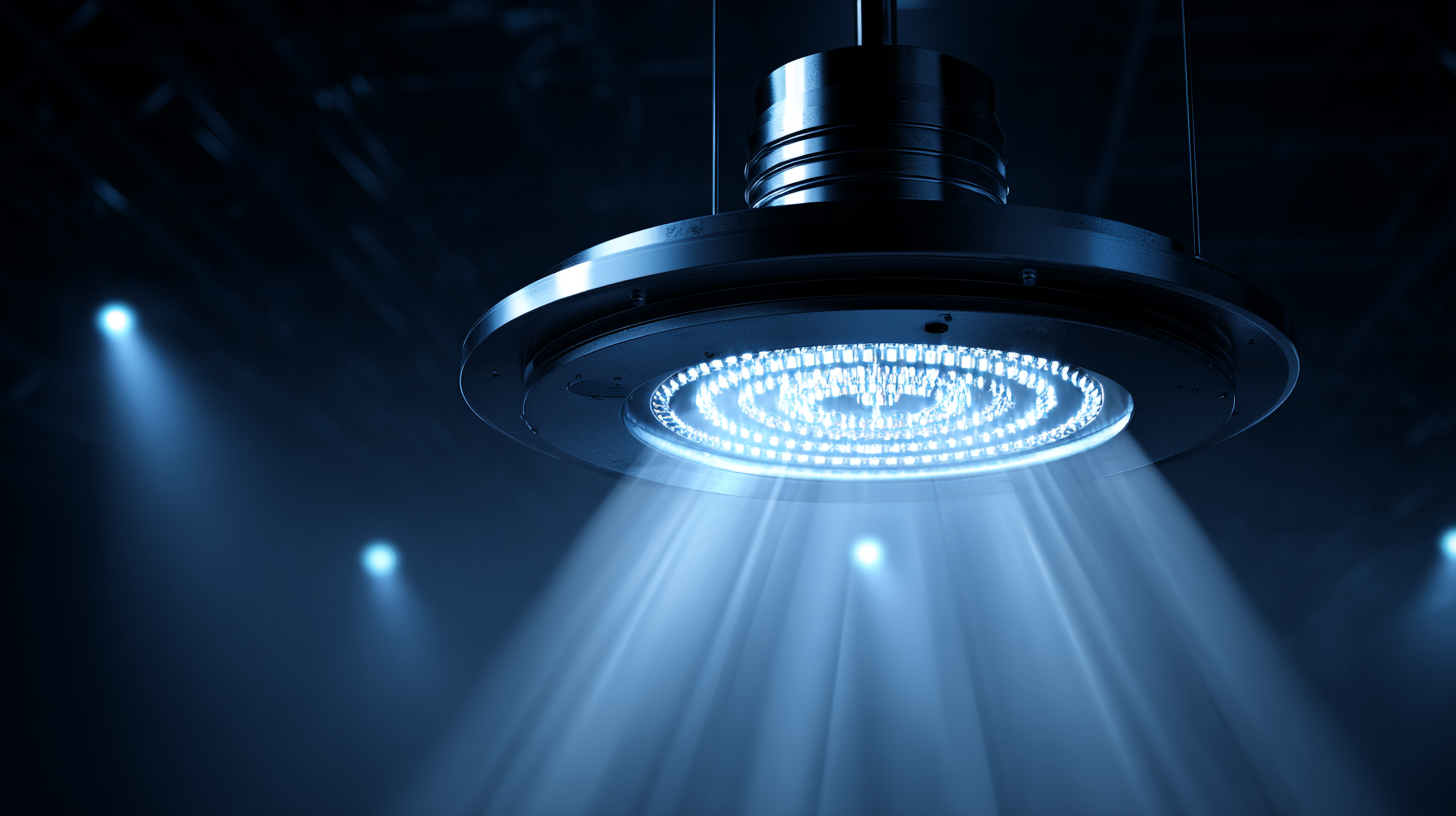The demand for LED lighting has surged dramatically in recent years, as highlighted in the 2022 LED Market Report by Industry Research, which indicates the global LED lighting market is projected to reach $100 billion by 2025, growing at a CAGR of over 13%. As sustainability becomes a top priority for businesses worldwide, the transition to LED lighting solutions not only reduces energy consumption but also contributes to significant cost savings and environmental benefits.

However, sourcing the best LED lighting solutions comes with its set of challenges, including navigating diverse suppliers, ensuring product quality, and adhering to varying regulatory standards across regions. This blog delves into common obstacles faced by organizations in their quest to integrate high-quality LED lighting into their operations, offering insights and strategies for overcoming these hurdles effectively.
When sourcing quality LED lighting solutions, identifying key criteria for selecting manufacturers is paramount. The first essential factor is a manufacturer’s reputation and experience in the industry. A company with a long-standing presence typically demonstrates reliability and a commitment to quality. Researching customer testimonials and case studies can provide insights into their product performance and after-sales service. Furthermore, ensuring that the manufacturer adheres to international quality standards and certifications, such as ISO and CE, can offer additional assurance about their products’ safety and efficiency.
Another crucial criterion is the range of products offered by the manufacturer. A versatile product line indicates that the manufacturer invests in research and development, which can lead to innovative lighting solutions tailored for various applications. Additionally, checking for customization options can be beneficial, as it allows you to meet specific project requirements. Finally, the availability of comprehensive support, including technical assistance and warranties, can significantly influence your decision. A manufacturer that stands behind their products fosters trust and ensures a smoother sourcing experience.

The LED lighting industry continues to evolve rapidly, driven by innovative technologies that significantly enhance performance and efficiency. According to a report by the International Energy Agency (IEA), global LED penetration in lighting fixtures has reached approximately 60% as of 2022, a figure expected to increase to 90% by 2030. This shift is largely attributed to advancements in LED manufacturing processes, including improved chip design and enhanced thermal management systems. These innovations not only boost the luminous efficacy of LEDs, which can exceed 200 lumens per watt, but also extend their lifespan, making them a preferred choice for both residential and commercial applications.
Moreover, the integration of smart technology within LED solutions is transforming how we approach lighting design. The market for smart LED lighting is projected to grow significantly, with a 25% compound annual growth rate (CAGR) expected through 2027, according to MarketsandMarkets. This surge is fueled by the increasing demand for energy-efficient solutions and the rising popularity of IoT-based smart home devices. By leveraging these innovative technologies, manufacturers are not only optimizing the performance of their products but also addressing common sourcing challenges, ensuring that the best LED lighting solutions are accessible worldwide.
In the quest for reliable LED lighting solutions, evaluating supplier certifications and standards is paramount. With the recent emphasis on sustainability within supply chains, businesses are increasingly focusing on suppliers that not only meet technical specifications but also align with ethical practices. As highlighted in a recent report, the integration of deep learning and machine learning techniques in supply chain management enhances supplier selection and contributes to more sustainable business operations. By employing these advanced technologies, companies can ensure that they partner with suppliers committed to improving working conditions and sustainability in production practices.
Additionally, sustainability is becoming a market imperative across various sectors. Research indicates that enhancing product supply chain sustainability can significantly impact revenue growth while aiding in progress towards global climate goals. For instance, companies are focusing on responsibly sourcing raw materials to mitigate environmental impacts. Industry reports reveal that a firm's commitment to sustainability can resonate strongly with consumers, potentially leading to increased loyalty and sales. Therefore, businesses seeking the best LED lighting solutions must rigorously assess supplier certifications and embrace sustainable practices to thrive in today's competitive market.
| Dimension | Details |
|---|---|
| Lumens per Watt | 80-100 lumens per watt for general lighting |
| Color Temperature | Warm White (3000K), Neutral White (4000K), Cool White (5000K) |
| Lifespan | Typically 25,000 to 50,000 hours |
| Certifications | UL, CE, RoHS, Energy Star |
| Dimming Capabilities | Compatible with leading-edge and trailing-edge dimmers |
| Warranty | Minimum 2-5 year warranty period |
| Color Rendering Index (CRI) | CRI of 80 or above recommended |
| Heat Management | Efficient thermal management practices are crucial |
When sourcing the best LED lighting solutions globally, one of the most significant challenges is comparing pricing and value. The LED lighting market is experiencing remarkable growth, projected to reach $118.4 billion by 2029, which underscores the importance of careful evaluation. With numerous manufacturers and products available, it’s crucial to look beyond the initial cost. Factors such as energy efficiency, lifespan, and maintenance costs can dramatically impact overall value.
To effectively compare pricing and value, organizations should consider utilizing tools that analyze the total cost of ownership (TCO). This includes not just the purchase price of LED systems but also their operational costs over time. For instance, the advancements in LED technology have significantly improved electrical efficiency and photon efficacy, resulting in substantial energy savings. By understanding these long-term benefits, organizations can make informed decisions that enhance sustainability in their lighting solutions, whether for commercial buildings or indoor farming applications.
Sourcing LED lighting solutions internationally presents unique challenges, particularly in navigating the intricacies of the global supply chain. According to a report by MarketsandMarkets, the LED lighting market is projected to reach USD 112.3 billion by 2025, highlighting an increasing demand. However, disruptions caused by geopolitical tensions, natural disasters, and the pandemic have made it crucial for businesses to adapt their sourcing strategies. Companies need to establish strong relationships with suppliers who can provide not only quality products but also reliability in delivery times.

Additionally, the shift towards sustainability is reshaping procurement strategies. The International Energy Agency (IEA) indicates that LED lighting can reduce energy consumption by up to 90% compared to traditional lighting solutions. This not only reflects a growing preference for energy-efficient products but also adds pressure on suppliers to adhere to environmentally friendly practices. When sourcing LED lighting, organizations should ensure their suppliers comply with sustainability certifications and standards, thereby addressing both the ethical implications of their sourcing decisions and the demands of environmentally conscious consumers.
